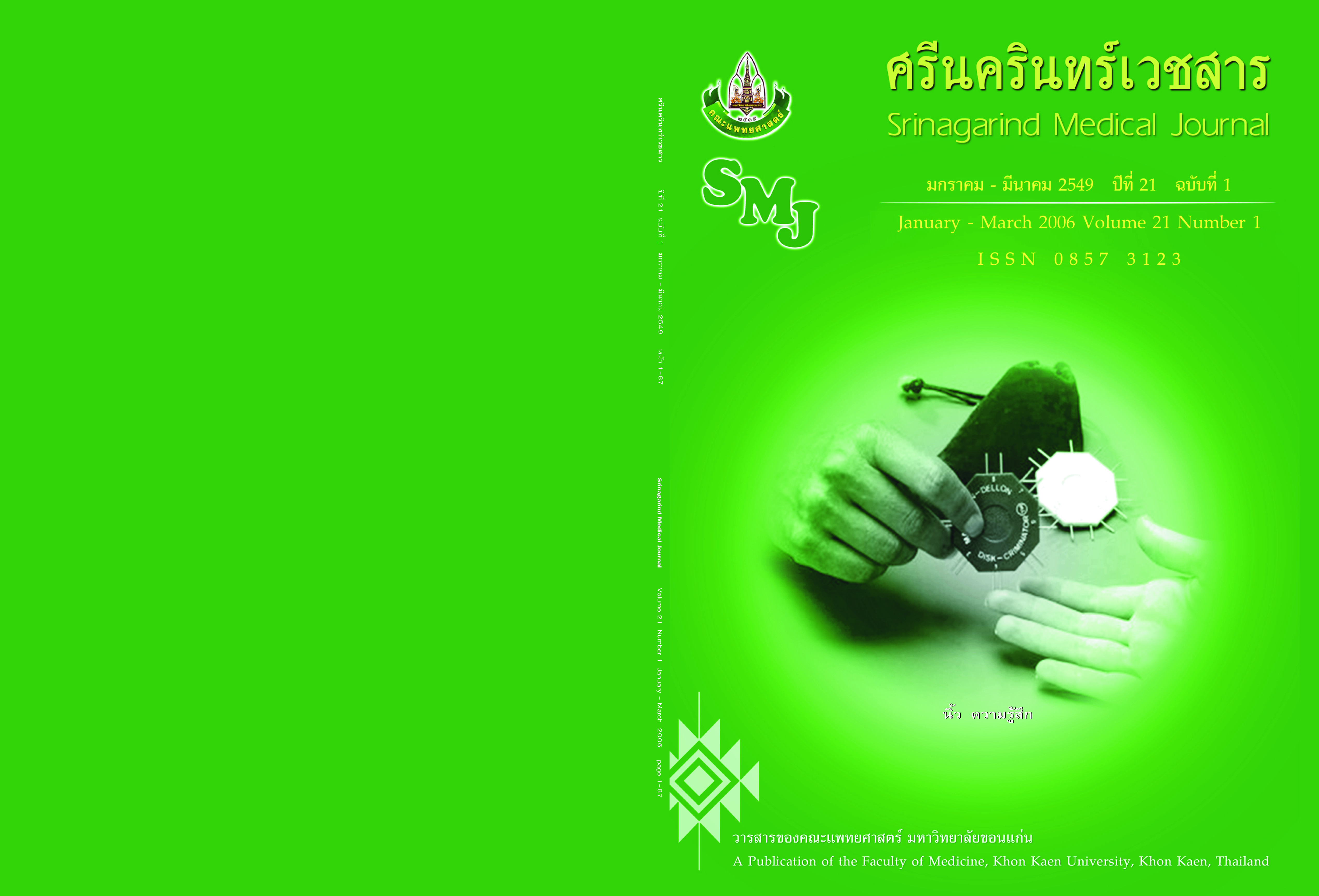Knowledge and behavior of Khon Kaen University student for ear picking
Abstract
Background: The Otorhinolaryngology Outpatient Department (OPD) at Srinagarind Hospital has reported that most patients have an incorrect knowledge and behavior regarding cleaning their ears. Introduction of foreign bodies into the ear canal can result in Ear Nose throat (ENT) diseases ranging from mild (acute otitis externa, impact cerumen) to severe (tympanic membrane perforation) with possible loss of hearing. One-third of the Otolaryngology OPD cases with acute otitis externa and impact cerumen in 2003 were students. We, therefore, wanted to assess the knowledge and behavior of ear cleaning among Khon Kaen University students. Our study should yield results useful for the development of correct behavior for ear cleaning thereby decreasing the incidence of ENT diseases.
Objectives: 1) to estimate the prevalence of ear cleaning among KKU undergraduates; and, 2) to evaluate their knowledge and behaviors.
Methodology:
Design: Descriptive study
Setting: Khon Kaen University, Amphur Muang, Khon Kaen, Thailand
Population: Undergraduates at Khon Kaen University who clean their ears.
Sampling: 250 persons by accidental sampling
Tool: Self-administered questionnaire
Analysis: Descriptive and analytic statistics
Results: The sample included 250 undergraduates (63% female), ranging between 16 and 26 years of age, from the 16 Faculties. Knowledge was studied in two parts: 1) “ears and ear wax” and 2) “ear cleaning and its possible complications”. Most (86%) of the respondents had an adequate knowledge as determined by an ENT specialist. In part 1. “ears and ear wax and part 2 ear cleaning and its possible complications” 69 and 64 percent had passing scores. All of the respondents had poked their ears an average 9 times the previous month: 5 times for cleaning and 3 times to decrease irritation. Devices introduced into the ear canal included cotton buds (7 times) and fingertips/fingernails (1 time). Most respondents did their own ears (8 times). There was a correlation between knowledge in parts I or parts I and II and the avoidance of intrusions into the ear. However, an increase in the knowledge of part I alone had no significant impact on the number of intrusions into the ear canal.
Conclusion: Most respondents had an adequate knowledge of the dangers of introducing objects into the ear canal, but still think that it is necessary. Health education should include an explanation of the mechanism by which the ear rids itself of wax, the possible complications and correct methods for cleaning ears without introducing foreign objects. People’s belief about the necessity for ear cleaning might then be changed and the behavior altogether reduced.
Keywords : KKU Students, ear picking




